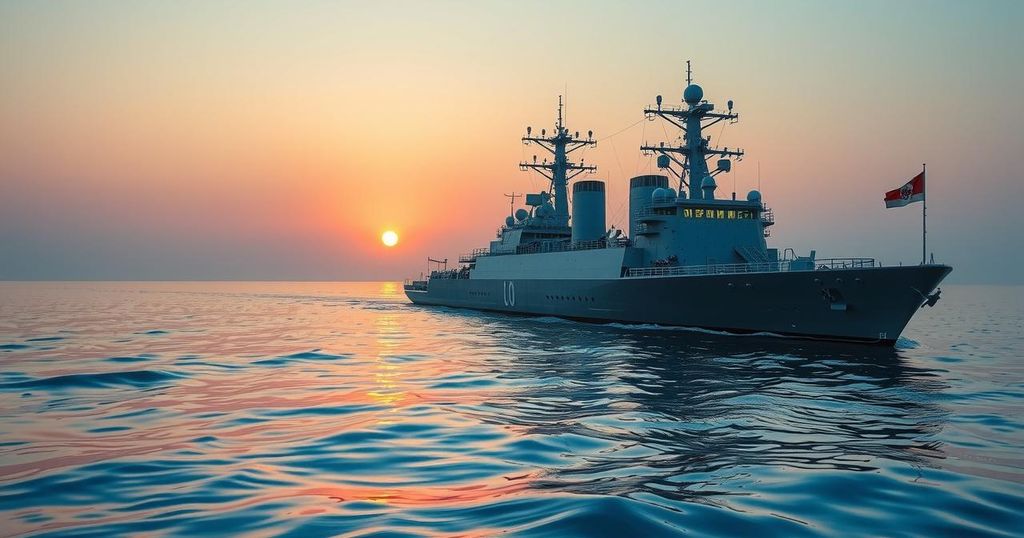Iran’s Revolutionary Guards unveiled their first drone carrier, the Martyr Bahman Bagheri, in Gulf waters, described as the largest naval military project in the Islamic Republic’s history. Capable of launching long-range missiles and accommodating up to 60 drones, the carrier also features electronic warfare capabilities. As Iran emphasizes its commitment to peace, it simultaneously displays military advancements amid ongoing geopolitical tensions.
On Thursday, Iran’s Revolutionary Guards revealed their inaugural drone carrier, the Martyr Bahman Bagheri, in Gulf waters, as reported by state media. According to naval commander Alireza Tangsiri, this commercial vessel has been converted into a drone carrier over the past two-and-a-half years. Tangsiri characterized the carrier as the “largest naval military project” in the history of the Islamic Republic, highlighting its capacities for launching long-range missiles, carrying drones and helicopters, as well as electronic warfare capabilities, allowing it to remain at sea for extended durations of up to a year. The vessel can accommodate 60 drones.
During the unveiling event, Guards chief Hossein Salami asserted that Iran does not seek to threaten other nations but emphasized their unwillingness to succumb to any power’s threats. He proclaimed, “We will not bow to the threat of any power,” asserting Iran’s commitment to peace with recognized governments. General Mohammad Bagheri, the Iranian armed forces chief present at the ceremony, labeled the carrier as “a mobile base that can operate self-sufficiently throughout the world’s waters.”
This unveiling coincides with the Fajr decade, a ten-day commemorative period celebrating the Islamic revolution which ousted the US-backed shah of Iran. In recent developments, Iran also displayed a new ballistic missile claimed to reach targets up to 1,700 kilometers away, on a day attended by President Masoud Pezeshkian. Since the 1979 revolution, Iran has developed advanced missiles and drones following the cessation of its arms relationship with the United States, which had been its primary supporter.
In response to ongoing tensions, particularly after US President Donald Trump adopted a “maximum pressure” strategy against Tehran, the Iranian government has increasingly showcased military prowess. Recent activities include large-scale military drills across the nation and the presentation of subterranean military facilities. These initiatives reflect Iran’s determination to bolster its defense capabilities during a tense international climate.
The recent unveiling of Iran’s first drone carrier reflects the Islamic Republic’s strategic military advancements in response to shifting geopolitical dynamics since the 1979 revolution. Following the breakdown of relations with the United States, Iran has focused on developing indigenous military capacities, particularly in missile and drone technology. Concurrently, ongoing global tensions and conflicts in the Gulf region have led nations, including Iran, to enhance their military deterrence and readiness. The unveiling fits into a broader narrative of national pride and defense sovereignty amid increasing external pressures.
The ceremony commemorating the unveiling of the Martyr Bahman Bagheri drone carrier symbolizes Iran’s continued commitment to military innovation and defense self-sufficiency. With its sophisticated capabilities and significant military project status, the carrier signifies Iran’s strategic response to perceived threats. Furthermore, amid regional tensions heightened by US policies, Iran seeks to assert its military presence and endurance in confronting external challenges.
Original Source: www.newarab.com




